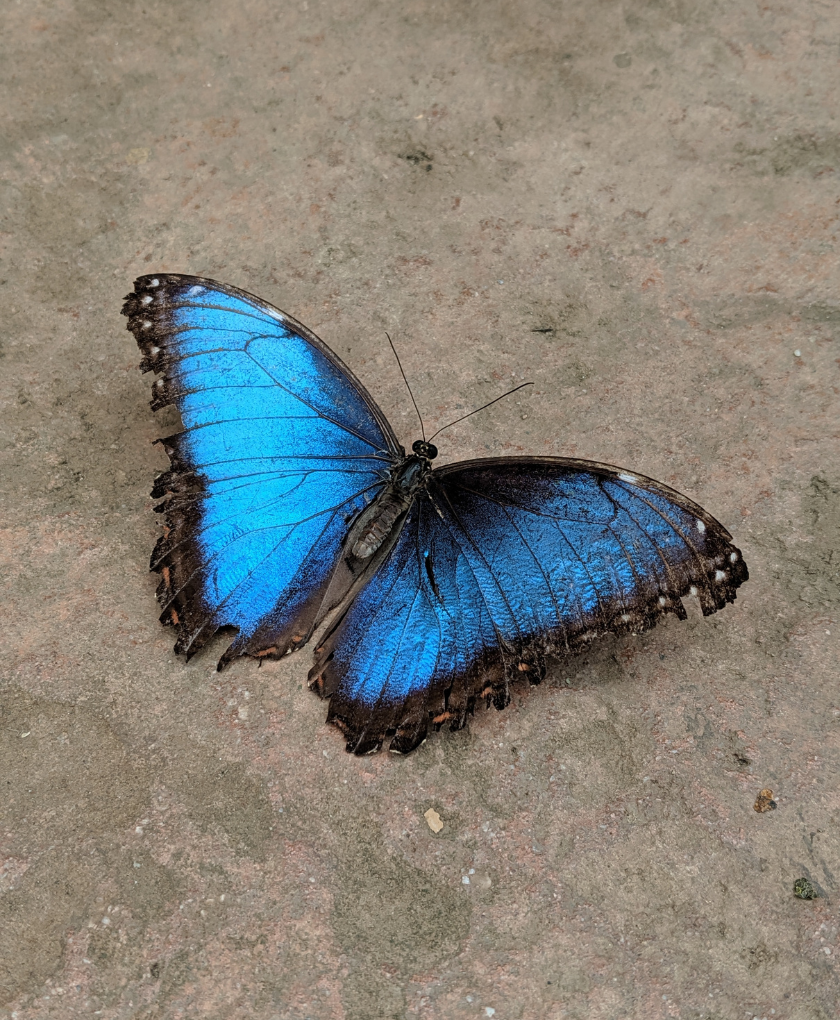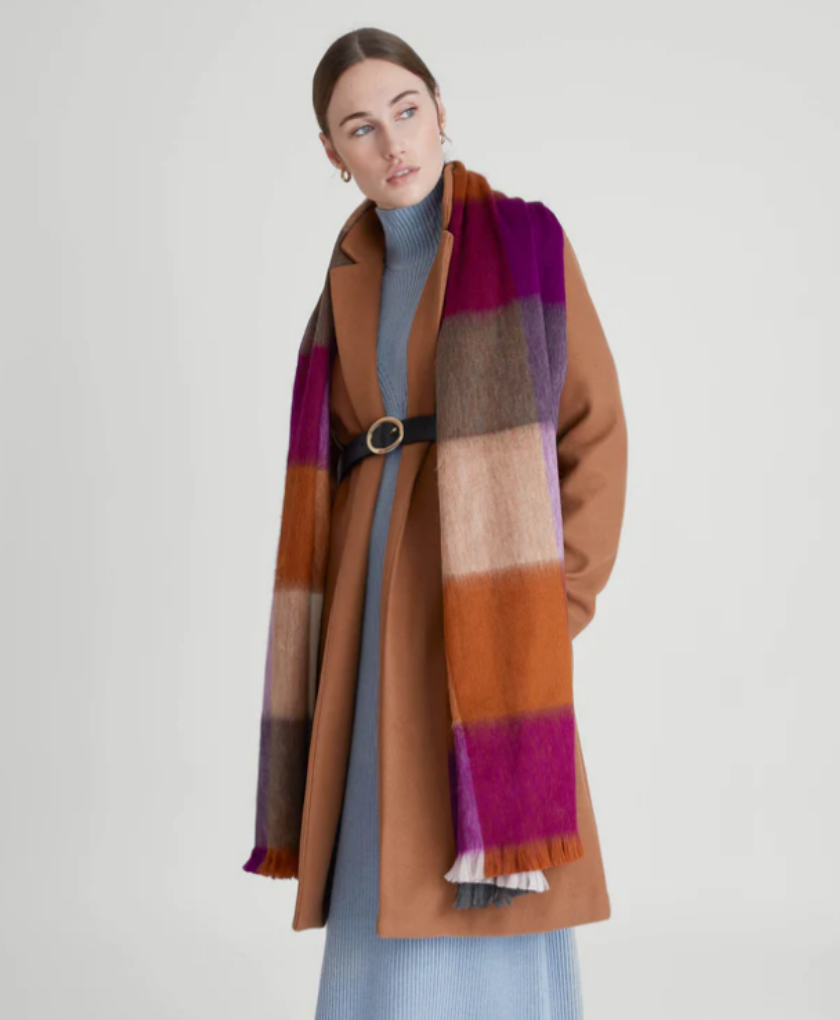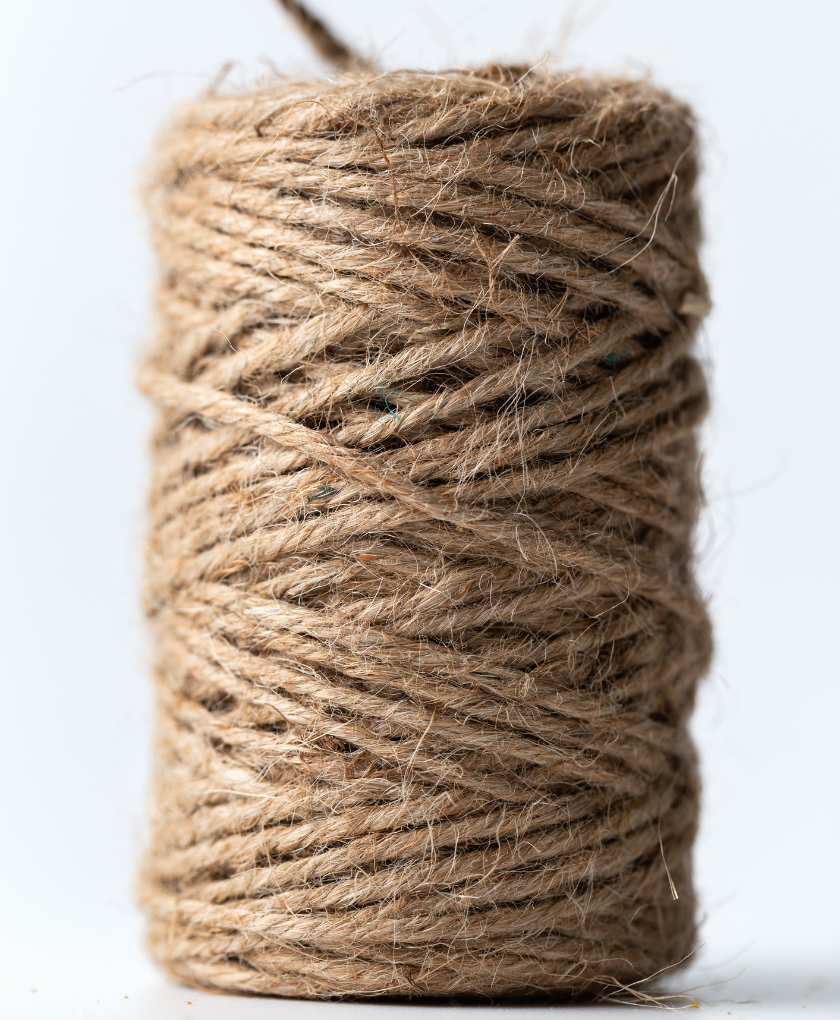Inspired by butterflies, Cypris Materials developed a sustainable coating technology
your guide to sustainability: we learn from nature
4 december '22
Reading time: 5 minutes
Cypris Materials uses the blue morpho butterfly for inspiration in the development of their colour sustainable coating technology, which is able to achieve all the colours of the rainbow without any toxic dyes or pigments.
Words by Lucia Peirone- Torti
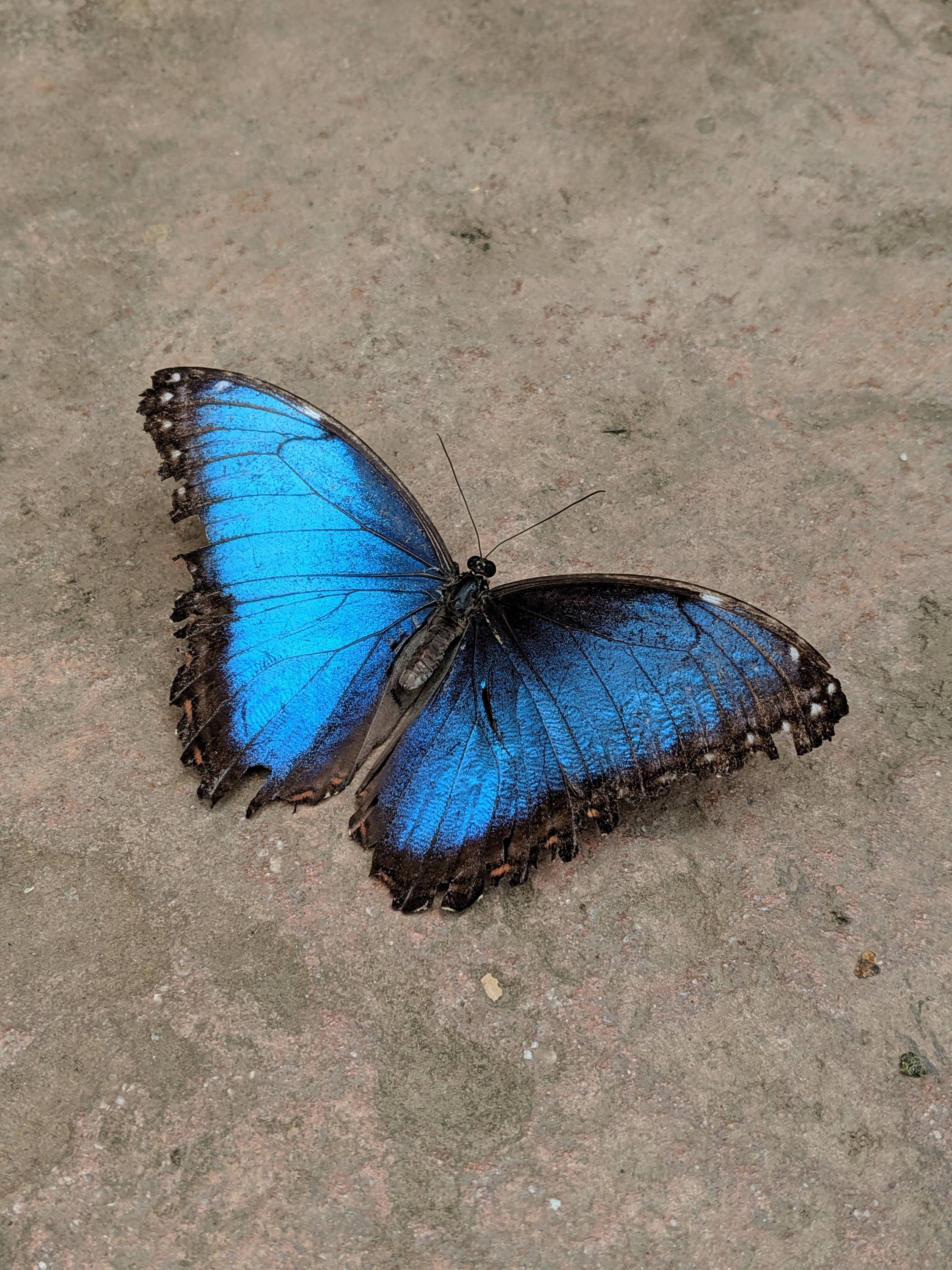
Picture by Anne Lambeck
When it comes to eye-catching insects, it’s hard to beat the blue morpho butterfly. One of the largest butterflies in the world, this native of Central and South America sports bright blue iridescent wings. If you have colour envy, advancements in the field of nanotechnology may allow you to one day paint your nails, or even your whole house, the same iridescent blue as this butterfly. Back in the day, paint often got its color from the actual animal kingdom. Insects like cochineal and carmine gave us rich blues and blood reds. Renaissance painters used egg as a binder in tempura oil painting. Now, rather than using insects as the material, one company is using them as inspiration. And it has the potential to do a lot more than beautify.
An opportunity for achieving natural pigments
Cypris Materials –a company in Berkeley, California– has created a paint inspired by blue morpho butterfly wings, which get their color from blue lightwaves reflecting off the nanostructure of the wings themselves (up close you’ll see they’re actually translucent). Like butterfly wings, Cypris’ paint works through reflection, so color comes from particular lightwaves that reflect off the nanostructure of the paint. In short, this paint functions through structural color rather than chemical processes. Coatings and color are restricted by aesthetics, ease of application, expense, range, and toxicity. Innovation in industries from various sectors like automotive, construction, and consumer products are all similarly limited by their surface chemistry. In industry, colors are typically produced by the inclusion of potentially toxic pigments, dyes, and binders within the coatings.
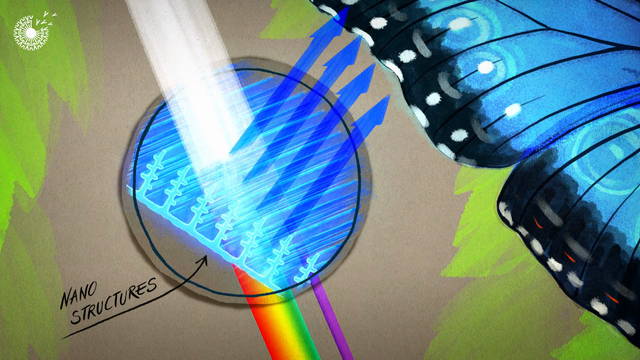
Picture from Cypris Materials, Inc.
Replicating the blue morpho butterfly’s spectacular wing colour involves a trick of the light. The top of the blue morpho’s wings are actually translucent. The bright blue colour is produced by tiny overlapping microscopic scales arranged across the surface of the wing that reflect light. This type of colour production is called structural colour. Structural colours are found throughout nature, says Dr. Natalia Dushkina, a professor from the Department of Physics at Millersville University, Pennsylvania. They’re produced by biological species including butterflies, birds, beetles, and fish, as well as shells, pearls and minerals like labradorite. The colours are generated by light reflecting back from a microstructure. “Everytime you see such intense blue-green colours with metallic sheen and glossiness, those are structural colours”, says Dushkina.
Natural coating: simple yet innovative
“The most important characteristic of structural colours is that they vary with the viewing angle,” says Dushkina. Take the iridescent feathers of a wood duck for example. “The colour changes if the duck tilts the head, or if the sun rays go down. During lunchtime, you see beautiful blue colour, and then at sunset, you look at the same duck and it is purplish.” Scientists have been chasing after the structural colour of a blue morphos butterfly for years. Not only do structural colours promise a dazzling iridescent shimmer effect that can’t be reproduced with pigments, but structural colours eliminate the need for pigments and dyes. The simplicity of this approach makes it possible to replace multimillion-dollar manufacturing equipment with a simple paint brush. These coatings are designed to replicate the naturally-occurring nanostructures that produce the brilliant colors observed in butterfly wings, peacock feathers, and opal gemstones.
The capability opens up an array of less toxic aesthetic choices, and it has functional benefits too. A treatment that reflects UV light could protect outdoor furniture from fading in the sun. Another treatment could reflect near infrared light—aka heat. The coating can then be applied to roofs, windows, and more, which would absorb less heat and reduce A/C use. Pearson claims the treatment can reduce energy by 20%. Apply the coating to a rooftop and you could still keep its dark color if you prefer!
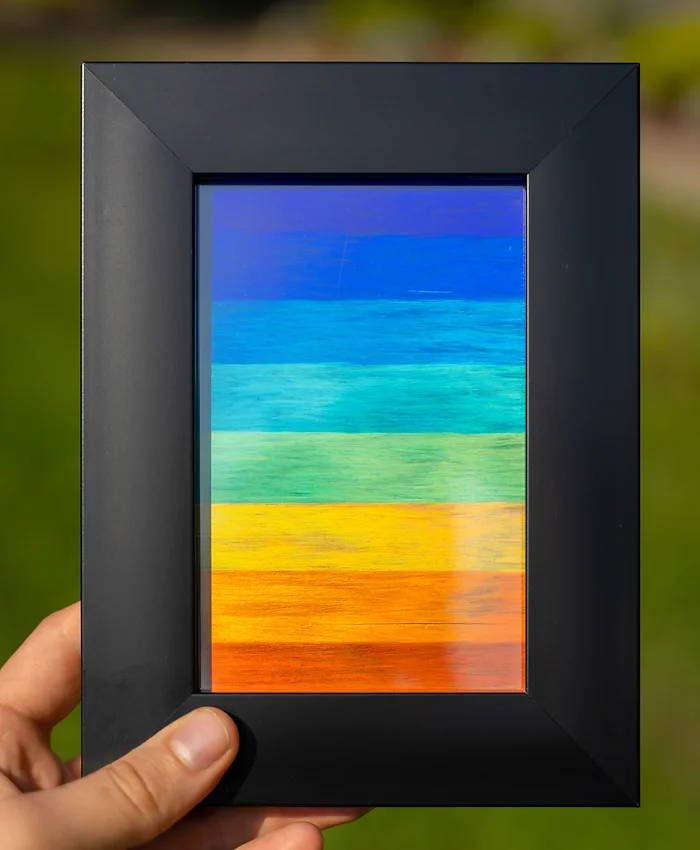
Picture from Cypris Materials, Inc.
The urban impact and the need for alternatives
The potential to act as a cooling agent is important, because our cities are getting hotter all the time. All the pavement in those so-called concrete jungles absorbs rather than reflect heat, and can create “heat islands” where cities are around 10 degrees warmer than the surrounding area. There are other architectural elements to reduce the environmental impact of our homes and offices, like tree planting, rooftop gardens, and painting roofs white. But this provides another potential tool, as this coating could also be used to help self-driving cars, which use LiDAR signals to detect nearby objects, Pearson says. LiDAR is infrared, so it’s absorbed by dark objects, making them harder to detect. Add a LiDAR reflective coating on bikes, bike helmets, and dark vehicles that share the road, says Pearson, and they’ll be better detected by self-driving vehicles.
When picking ingredients for eco-friendly paint, less is more. Paints and inks are typically composed of four different components: a binder, solvent, additives, and colourants. “What we make is essentially a binder”,says Dr. Ryan Pearson, co-founder and CEO of Cypris Materials. Because the binder itself produces the colour, there is no need to add pigments or dyes. “We take inherently safe materials, reshape them a bit through our polymer chemistry, and we’re able to make a simpler, safer paint.”
Recognizement and future perspectives
The Ray of Hope Prize® celebrates nature-inspired solutions addressing the world’s biggest environmental and sustainability challenges. Created in honor of Ray C. Anderson, founder of Interface, Inc. and a business and sustainability leader, the $100,000 Ray of Hope Prize helps startups cross a critical threshold in becoming viable businesses by amplifying their stories and providing them with equity-free funding. The prize shines a light on the innovative, nature-inspired solutions that we need to build a sustainable and resilient world. Cypris Materials was selected as the Runner Up for the 2020 Ray of Hope Prize. Although the company doesn’t sell directly to consumers, expect structural color to appear in consumer goods, including cosmetics, in the next year or two; automotive within the next four, and on buildings in the next five, following long-term weather testing in South Florida.





